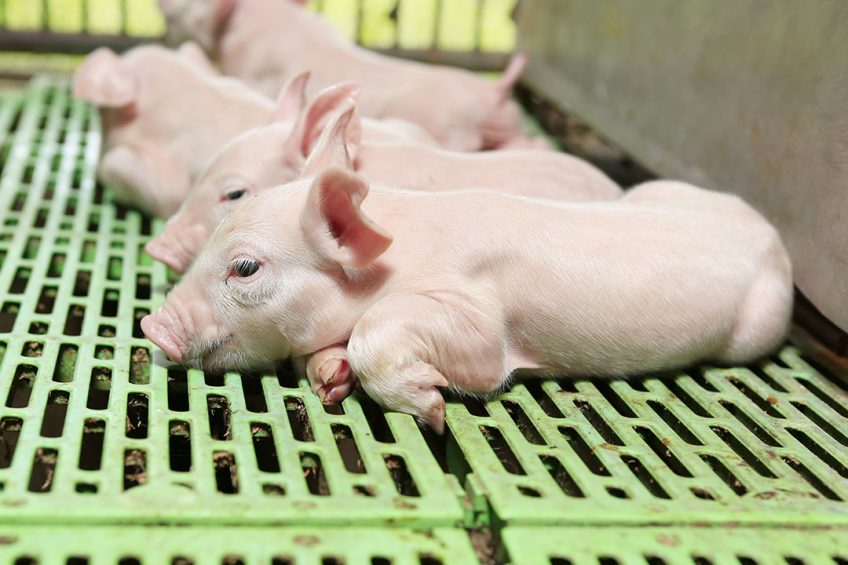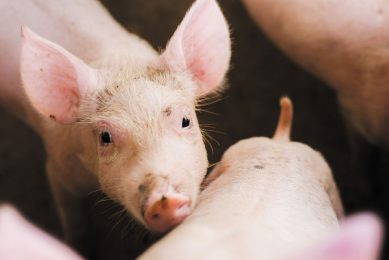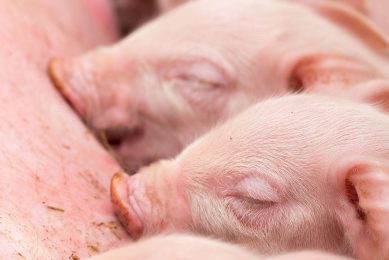What is inflammation?

Historically, the livestock industry has addressed common production challenges, such as poor carcass and meat quality, poor reproduction and lameness, as singular issues. It is now clearer that there is a common root cause that links these production issues: chronic or imbalanced inflammation.
Inflammation is necessary for life and is the first step in the healing or repair process that helps the body fight off bacteria, pathogens and their toxins and repair damaged tissue. If you’ve ever twisted your ankle, been stung by an insect or cut your finger, you may have experienced first hand the familiar sensations of pain, redness, swelling, and heat that result from an injury or infection. This is inflammation in action.
While an appropriate and robust inflammatory response is necessary, excessive or prolonged inflammation can become detrimental if not controlled. Inflammation is divided into two categories: acute and chronic.
• Acute inflammation is the first line of defence to a pathogen or injury. It’s a short-term process where the immune system sends white blood cells to the site of the injury or invasion of the pathogen to initiate the healing process. This response should be rapid and robust, appearing within minutes or hours following activation of an immune response.
• Chronic inflammation occurs when the immune response fails to eliminate the cause of the immune response or acute inflammation. Chronic inflammation can last for weeks, months or longer. It diverts nutrients away from growth, reproduction and production in order to fuel the fight against the inflammatory response.
Risks and costs of chronic inflammation
Livestock producers need to pay close attention to inflammation and the immune system. While inflammation is necessary, there is a trade-off in terms of animal performance. When an animal is sick, its feed intake will decrease. At the same time, the immune system redirects nutrients utilised for growth to protection during an acute inflammatory response.
When the immune response persists, and chronic inflammation occurs, nutrients and energy are diverted away from animal performance (including growth, reproduction, feed efficiency, and meat or milk production) – ultimately decreasing profitability.
The immune system in action
The immune system is comprised of a sophisticated network of cells, proteins and enzymes that are programmed to monitor animal wellness. This network of cells detects and responds to bacteria and pathogens that may invade the body, as well as responds to stressors, injury or environmental challenges. All of these can have a detrimental impact on animal wellness and performance.
When a pathogen or bacteria crosses one of the body’s barriers, such as the skin, mucous membrane, or blood vessel linings, the immune system will detect the invasion. The immune system then sends signals to cytokines, pro-inflammatory proteins, indicating that help is needed. This initiates the movement of white blood cells toward the site of inflammation, infection or trauma.
The first responders to the site are white blood cells called phagocytes. These cells help protect the body by ingesting harmful foreign particles, bacteria, and dead or dying cells. There are two forms of phagocytes:
• Neutrophils are small, granular leukocytes that quickly appear at the site of a wound and ingest bacteria.
• Monocytes are larger leukocytes that appear about three days after infection and scavenge for bacteria, foreign particles and dead cellular material left behind by the neutrophils.
The neutrophils appear at the site first and work to engulf and destroy the pathogen or bacteria. They then display pieces of the pathogens on their surface to signal the monocytes to help con-tinue the attack on the invading pathogens.
There are also a group of anti-inflammatory cytokines that help control the pro-inflammatory cytokine response. However, if there is a lack of balance between the pro-inflammatory and anti-inflammatory proteins, the pro-inflammatory cytokines can send too many monocytes (white blood cells) to the site, damaging healthy cells and leading to chronic or prolonged inflammation. This is the point when an acute inflammatory response can potentially turn into a chronic inflammatory response.
Common sources of inflammation
There are several common inflammation sources that impact livestock performance and profitability. Two of the most common sources are poor gut integrity and heat stress.
• Poor gut integrity: The gastro-intestinal (GI) tract lining serves as an important barrier to prevent bacteria, pathogens and their toxins from passing through the intestinal lining and into the bloodstream. When a breakdown in the barrier occurs, this can lead to a condition called leaky gut. When a prolonged inflammatory response occurs in the GI tract, this decreases feed intake and animal performance.
• Heat stress: When animals are under heat stress, blood flow is diverted away from the tissues that line the blood vessels within the stomach, digestive tract and other internal organs to the skin, which facilitates the heat dissipation process. However, the reduction in blood flow causes a decrease in the amount of oxygen and energy available to the epithelial layer of cells lining the gastrointestinal tract, allowing pathogens and their toxins to enter the bloodstream, due to leaky gut.
Production challenges
A few common results or consequences of inflammation in livestock include decreased carcass and meat quality, decreased reproductive performance and increased lameness. These production challenges involve an immune response. Left uncontrolled, this immune response can lead to chronic inflammation.
Reproduction
It is critical for production animals to mount an effective immune response following the birthing process in order to effectively eliminate pathogens that enter the reproductive tract during the birthing process. It is also important to repair epithelial tissues damaged during birthing and replace those with healthy epithelial tissue in order to help prepare the animal for subsequent pregnancies. While this process is necessary, prolonged or chronic inflammation can result in decreased reproductive performance.
Lameness
Lameness is a significant animal wellness and economic issue. Lameness not only impacts animal locomotion, it also is often due to inflammation. Left uncontrolled, the results can be reduced milk yield, reduced fertility and increased risk of culling, leading to considerable economic costs.
Mammary health
Somatic cell count is a marker for chronic inflammation in the udder. By lowering chronic inflammation in the animal, you can lower somatic cell count, allowing more energy and nutrients to be used for milk production versus fighting inflammation.
Respiratory infections
Respiratory infections can destroy the epithelial lining of the upper respiratory system, allowing pathogens to access the lower respiratory system. When this occurs, it can result in a prolonged inflammatory response that may lead to reduced weight gain, lower feed conversion and increased mortality.
Role of performance trace minerals
Performance trace minerals, when fed as part of a well-balanced livestock nutrition programme, can help manage the effects of chronic inflammation. Peer-reviewed research demonstrates that Zinpro Performance Minerals help fortify the immune system, providing a more robust and balanced immune response compared to feeding either inorganic and organic trace minerals. This helps animals recover faster, while minimising economic losses.
For more information, go to EssentialFeed.zinpro.com.
Author: Connie Larson, PhD, global manager, research and nutritional services, Zinpro
Join 18,000+ subscribers
Subscribe to our newsletter to stay updated about all the need-to-know content in the pigsector, three times a week. Beheer
Beheer




 WP Admin
WP Admin  Bewerk bericht
Bewerk bericht